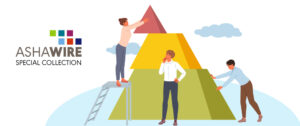ASHA members face a number of hurdles when seeking to provide culturally congruent, evidence-based practice to their entire caseload. For example, clinicians may find little research describing speech, language, and literacy interventions specifically for Indigenous children. The latest forum in Language, Speech, and Hearing Services in Schools (LSHSS) brings together authors from diverse backgrounds with a focus on supporting best practice for Indigenous populations with communication disorders.
Essential Strategies and Evidence-Based Practice
The forum opens with an introduction from Guest Editors Christine B. Vining and Mark Guiberson reflecting on the importance of equity in service delivery for Indigenous children and introducing the articles. They proceed to outline how the forum provides clinicians with “essential strategies for culturally congruent practice and evidence-based practices to support quality service delivery when addressing the needs of children with speech and language disorders” (p. 366–367).
Next, Allison-Burbank and Reid show how to incorporate decolonization and Indigenous pedagogies when planning and delivering speech-language services to Indigenous students. The authors write that these efforts can address educational inequity by helping promote student resilience, well-being, and identity.
Culturally Competent Care in Three Populations
The next three articles discuss how speech-language pathologists (SLPs) can promote equity when working with three specific populations. First, Henderson introduces clinicians to Navajo speech and language characteristics such as phonology, morphology, and syntax to help providers distinguish language disorders from language differences.
An article by Hernández et al. aims to help SLPs understand educational obstacles faced by Maya children, support best practices for educational success, and determine service delivery considerations for these children. Then, Callahan and Hanson detail a unique project to develop an augmentative and alternative communication (AAC) system for a child who is learning to speak the Lakota language.
Culturally Responsive Care and Resources
SLPs with an Indigenous background make up less than 0.3% of ASHA’s workforce, and children of Native American descent are unlikely to receive speech-language services from someone who shares their culture and heritage. Meeks addresses this gap with a tutorial on increasing Indigenous representation in the professions by creating opportunities for Native American college students to work as speech-language pathology assistants. The forum finishes with an article by Guiberson and Petrita Ferris describing how SLPs can support language and literacy of young Native Americans during shared book experiences.
We’d like to thank Drs. Vining and Guiberson, and all of the authors and reviewers, for their important work putting together this forum. You can hear more from the guest editors by watching the video below.
This work represents a crucial first step for SLPs who work with Indigenous children every day. Read the entire forum in the latest issue of LSHSS, or explore the individual articles below.
Related Videos
Explore the Forum
Allison-Burbank, J. D., & Reid, T. (2023). Prioritizing connectedness and equity in speech-language services for American Indian and Alaska Native children. Language, Speech, and Hearing Services in Schools, 54(2), 368–374. https://doi.org/10.1044/2022_LSHSS-22-00101
Callahan, J., & Hanson, E. K. (2023). Reconnecting Indigenous language for a child using augmentative and alternative communication. Language, Speech, and Hearing Services in Schools, 54(2), 387–394. https://doi.org/10.1044/2022_LSHSS-22-00113
Guiberson, M., & Petrita Ferris, K. (2023). Native American caregiver–child shared book reading interactions: A descriptive study and integrative review. Language, Speech, and Hearing Services in Schools, 54(2), 409–424. https://doi.org/10.1044/2022_LSHSS-22-00085
Henderson, D. E. (2023). Diné Bizaad at a glance. Language, Speech, and Hearing Services in Schools, 54(2), 375–378. https://doi.org/10.1044/2022_LSHSS-22-00078
Hernández, A. W., Campos, I., & Zuniga Zyskind, K. (2023). Considerations in utilizing translanguaging practices to meet the language needs of Maya children in U.S. schools. Language, Speech, and Hearing Services in Schools, 54(2), 379–386. https://doi.org/10.1044/2022_LSHSS-22-00082
Meeks, J. C. (2023). Native American speech-language pathology assistants: Expanding culturally responsive services in reservation schools. Language, Speech, and Hearing Services in Schools, 54(2), 395–408. https://doi.org/10.1044/2022_LSHSS-22-00081
Vining, C. B., & Guiberson, M. (2023). Forum introduction: Promoting equity in speech-language services with Indigenous Children. Language, Speech, and Hearing Services in Schools, 54(2), 365–367. https://doi.org/10.1044/2023_LSHSS-22-00191







